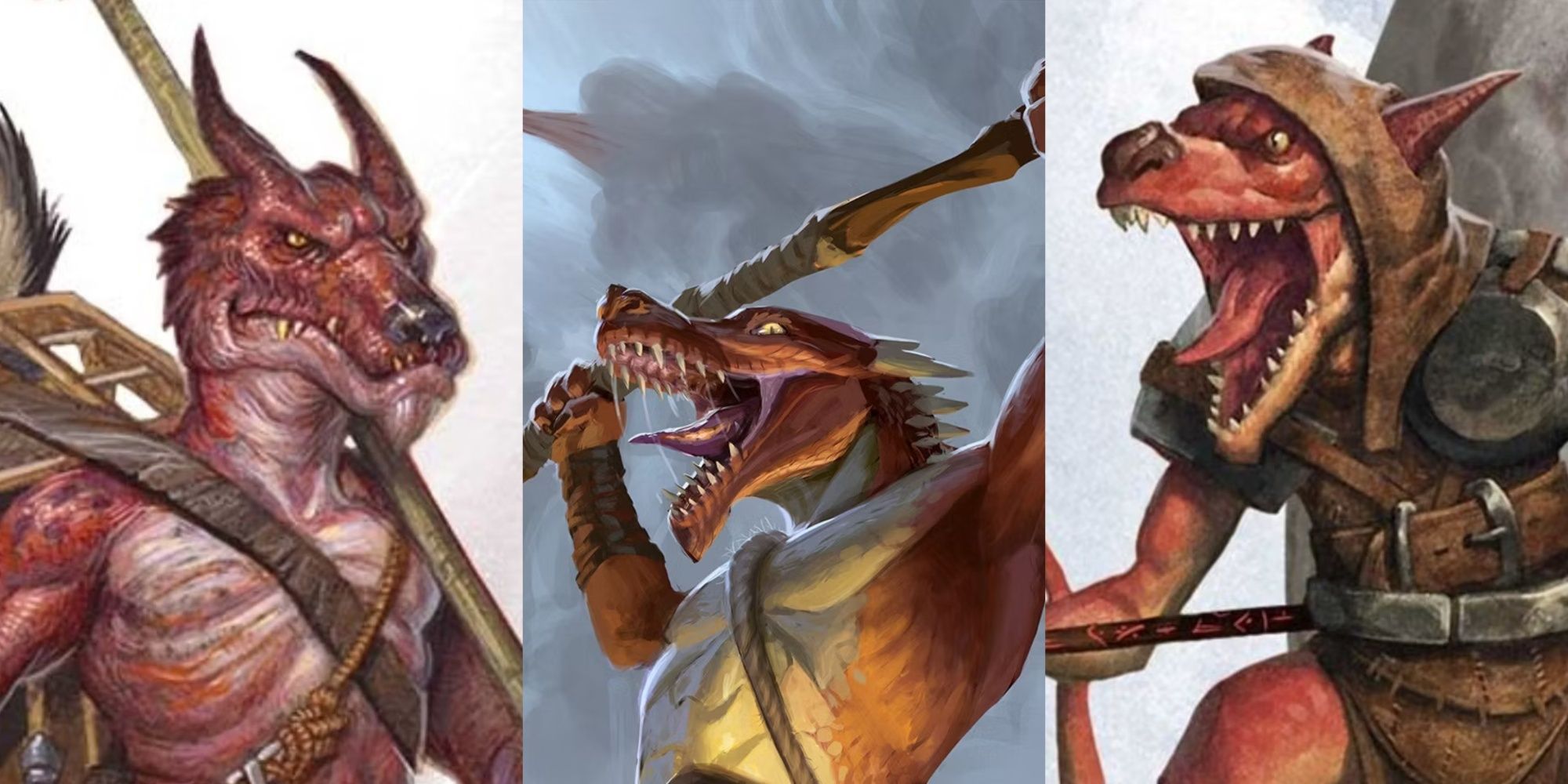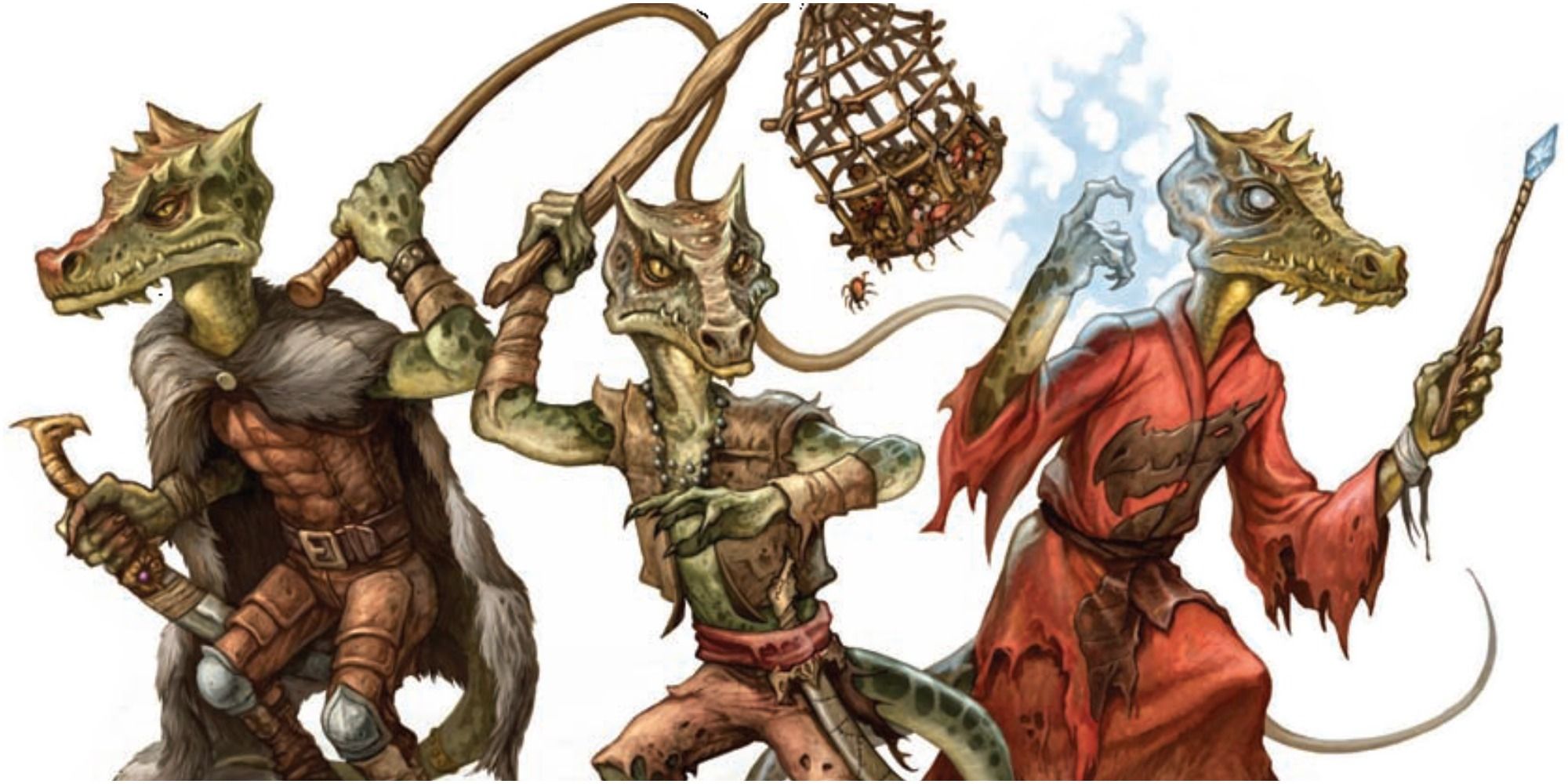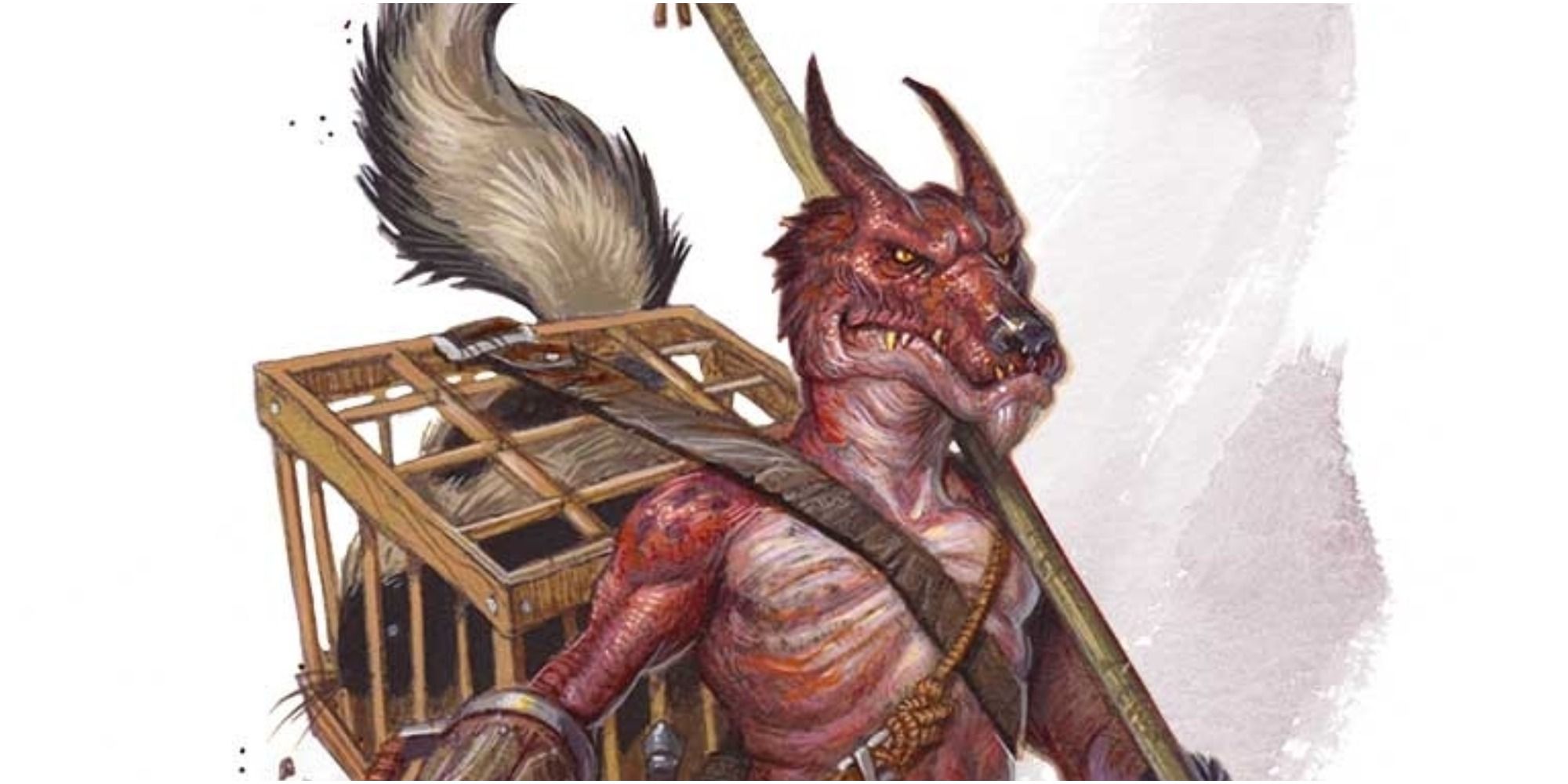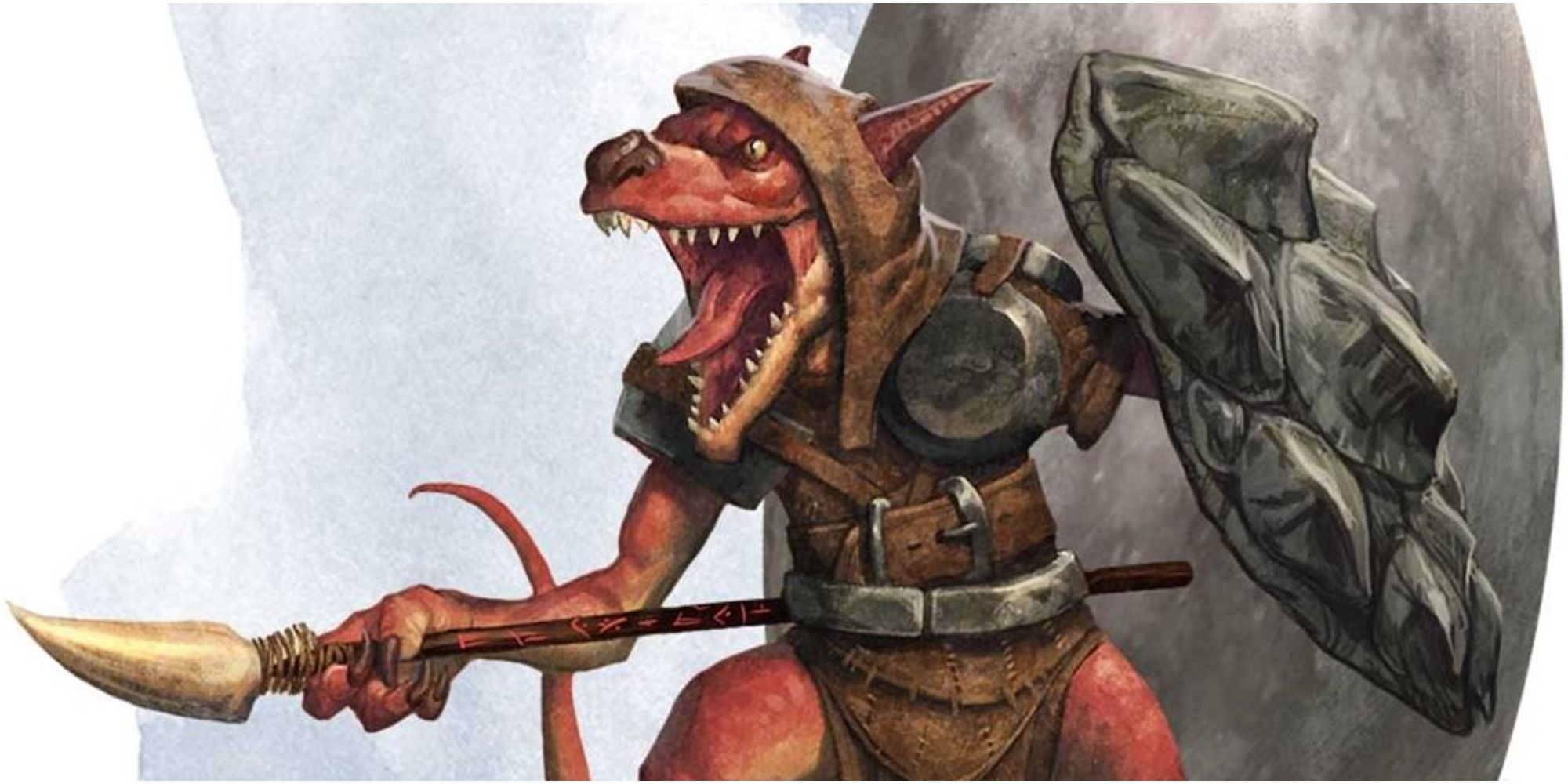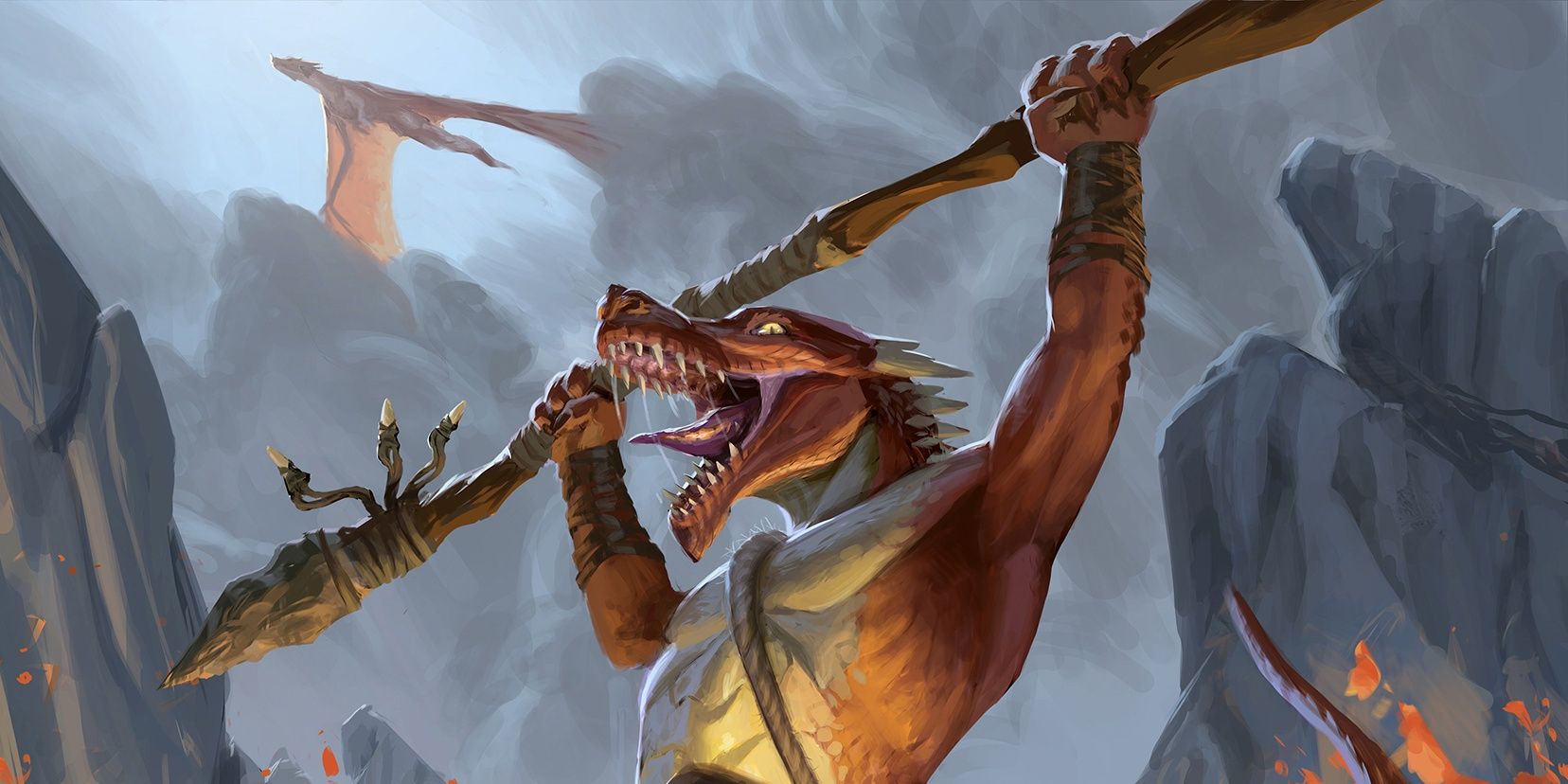Small and deadly, Kobolds are a quite famous species in Dungeons & Dragons; as low-level enemies, you can put them against your players if you get sick of using Goblins. Eventually, the short, Dragonborn-like creatures became an option for players, a common trend for many humanoid species in the game.
Over the years, they've also had a big change in how they're portrayed, going from coward goons to brave creatures. How that will be for your character depends on you, of course, but there are still interesting features to consider, giving you the perfect opportunity to create the greatest Kobold of all.
5 Use Your Size To Your Advantage
A notorious trait for Kobolds is their height, ranging between 2ft (60cm) and 3ft (90cm), and their in-game size is classified as small. Since most species are medium, and most players will be medium-sized, having a different size gives you unique game opportunities and benefits classes with a nick for breaking and entering, such as Rogues.
You can ride any creature a size above yours, so medium creatures work as mounts — your DM might even let you stay on an ally's back or shoulder, if said ally doesn't mind. You can be easily tossed by an ally with a high strength score, and you can squeeze into places a size below yours, meaning you could get into a hole large enough for a tiny creature. There are downsides, such as disadvantages with heavy weapons, but even a Barbarian Kobold is doable by using a longsword and shield or with a weapon in each hand.
4 Know How You Fit In The World
First and foremost, we'll talk about official D&D lore here. If you're playing a homebrew scenario, then you should ask your DM how a Kobold is perceived by the people. And there is a good chance your DM won't mind that you are a Kobold, and NPCs will treat you normally. But there's also a chance people will look down on you.
Kobolds are sometimes used as common enemies, similar to the aforementioned Goblins. Thus, depending on their situation, people might see you as a potential enemy, allowing you to create a complex story about how your species is treated in your world. It can get into heavier themes, though, so if that's the case, be sure these topics won't trigger any real-life issues with your friends.
Lastly, they're often seen as devoted followers of Dragons, treating them as Gods. Making your Kobold a follower of Bahamut is an easy way to make a Paladin, for example. But you could be an exception, despising Dragons who poorly treat Kobolds or simply not caring about the whole situation. Both following the norm and breaking it are wonderful roleplay opportunities, so feel free to use whatever concept fits your character better.
3 Use Volo's Guide To Monsters And Monsters Of The Multiverse
Like many playable species, Kobolds got reworked in Monsters of the Multiverse, but their original features come from Volo's Guide to Monsters. They're pretty similar to one another, but the few differences they have are also quite significant.
In Volo, you get a fixed buff to your Dexterity (+2), a Cry that gives an advantage against any enemies 10ft (3m) away from you for a turn, and you have one of their best features, Pack Tactics, which gives you an advantage on an attack against an enemy who is engaged in melee combat against an ally of yours. However, you also get Sunlight Sensitivity, giving you a disadvantage in attacks while fighting under direct sunlight.
Multiverse lets you add a +2 and a +1 into whatever ability scores you want, lets you use your Cry more often, and removes your Sunlight Sensitivity. The biggest hit here is the removal of Pack Tactics, though. Instead, it gives you Draconic Legacy, which offers three different bonuses, and you choose one during character creation. You can get extra skills, be resistant against being frightened, or get a Sorcerer cantrip, regardless of your class, allowing you fun combinations of having things like Booming Blade on a Rogue, for example.
Overall, Multiverse is much more versatile, despite removing Pack Tactics. However, Volo's version is still fun, and it would be a good choice if you're making a build that revolves around getting critical hits often. If your DM lets you choose, go for whatever fits your build better, but our recommendation would be Monsters of the Multiverse due to its versatility.
2 You Can Be An Amazing Melee Or Support Character
Regardless of which version you pick, both will feature a Cry that affects all nearby enemies, letting people hit said enemies at an advantage. Giving an advantage to multiple allies for a turn can turn the tide of a fight beautifully, especially when surrounded by relatively strong enemies or having everyone strike a powerful boss efficiently.
Plus, the Multiverse option lets you do this a number of times equal to your proficiency bonus, so you can spam it over and over if the fight is that intense, making you a potent Support option for your team. It will only affect enemies 10ft (3m) away from you tops, so you have to be close to your enemies when fighting. That makes Kobold good combinations for melee characters or, if you really want to be ranged, characters with high mobility who can use their cry and move away from the enemies all at once.
1 Choose The Best Classes For Kobold
We've already mentioned Rogues, and for a good reason. Dexterity bonus, advantages helping you do critical hits to boost your Sneak Attack, small size for hiding, and being useful on melee or ranged. You can even use your Legacy to combo your only attack per turn with Booming or Green-Flame Blade.
Fully dedicating yourself to the Support category, such as a Cleric or a Spellcaster, depending on what spells you choose, would also be efficient. Alternatively, you can choose to go frontline with a Hexblade Warlock, or even the likes of Fighters and Paladins, or even the aforementioned Barbarian pick. It may look unorthodox, but Kobolds are a fun fit for the frontline, regardless of if you're using spells or not. Your Legacy also comes with the option of resisting being frightened, allowing you to stand your ground as a tank. Kobolds are versatile, and many classes will fit well.

